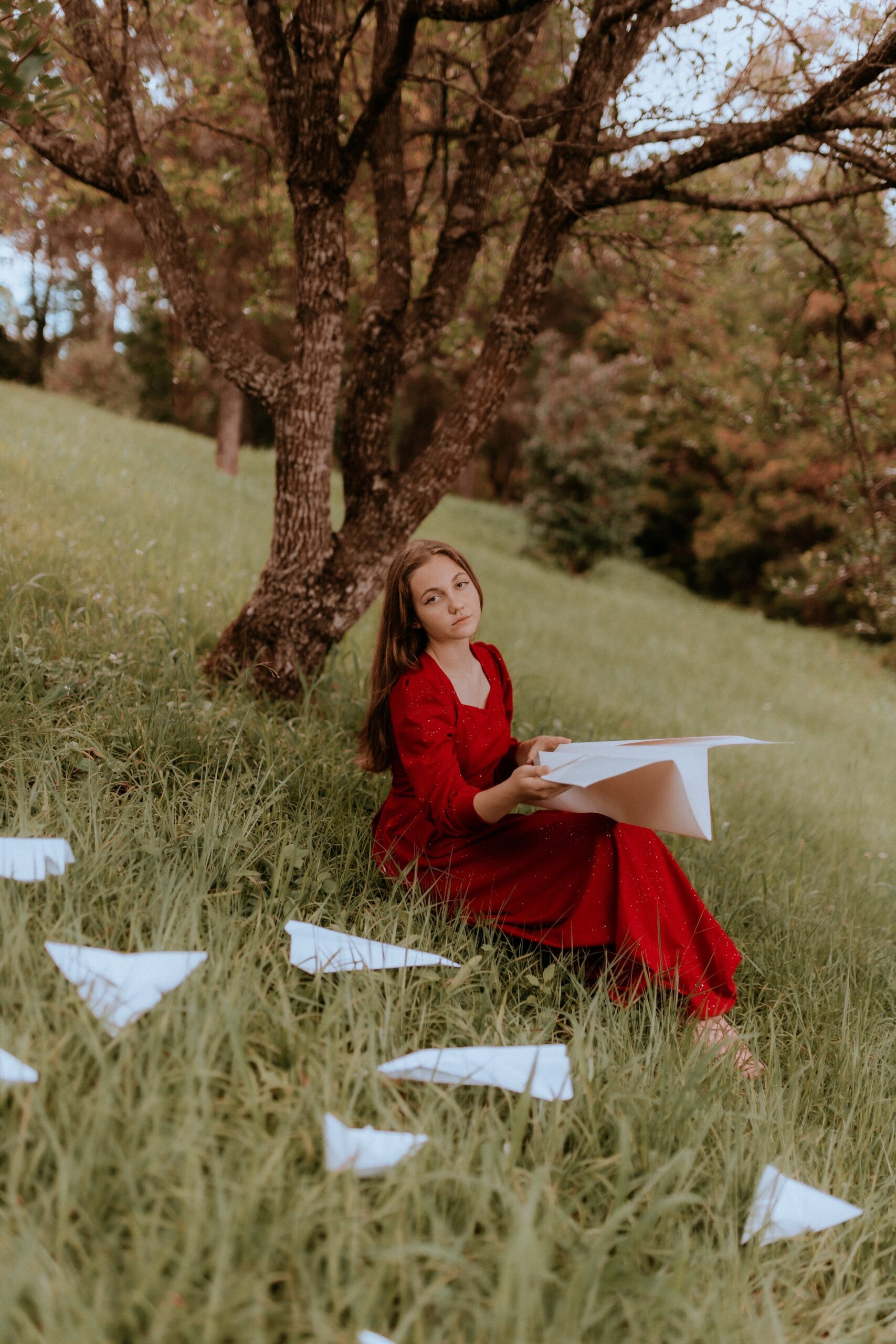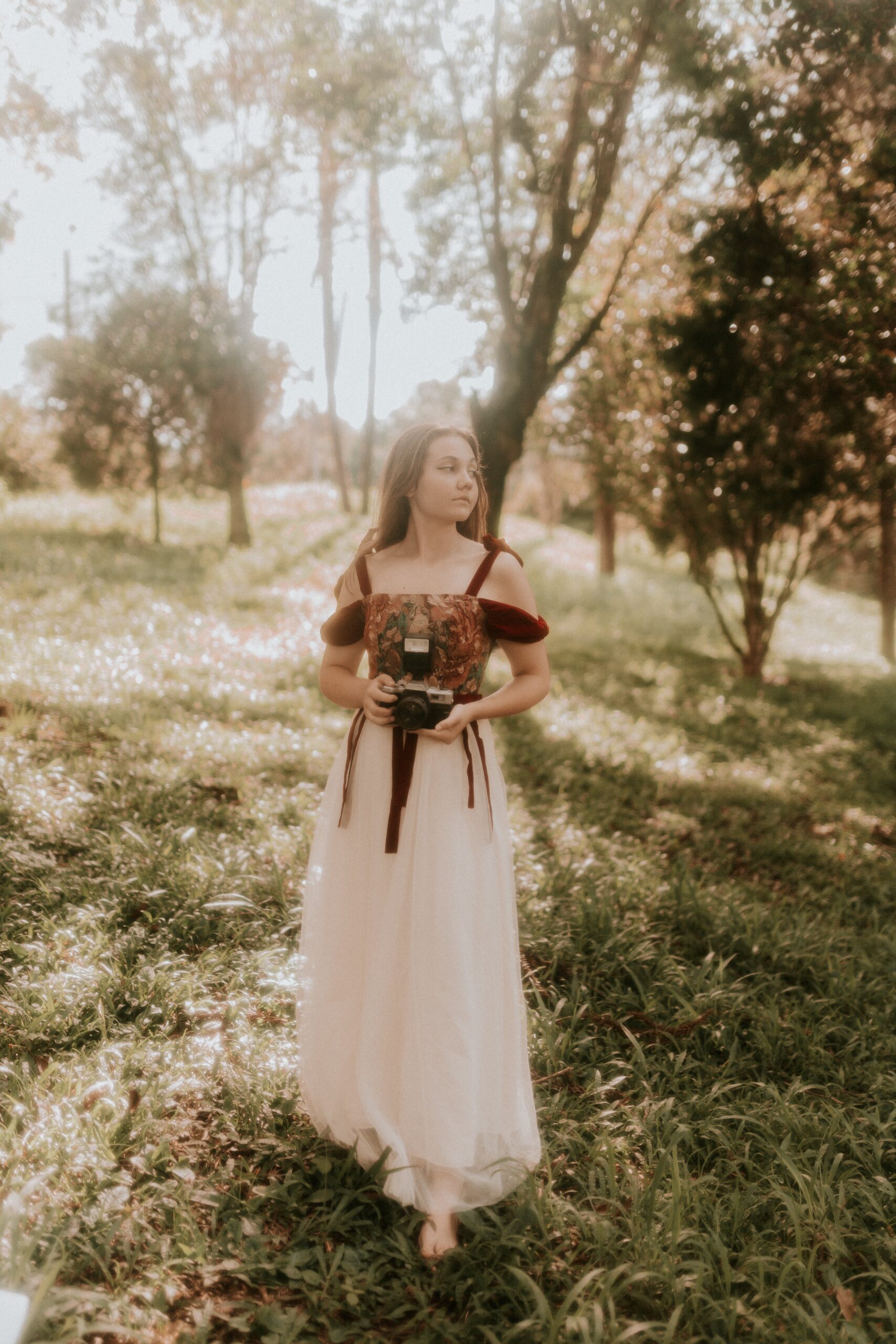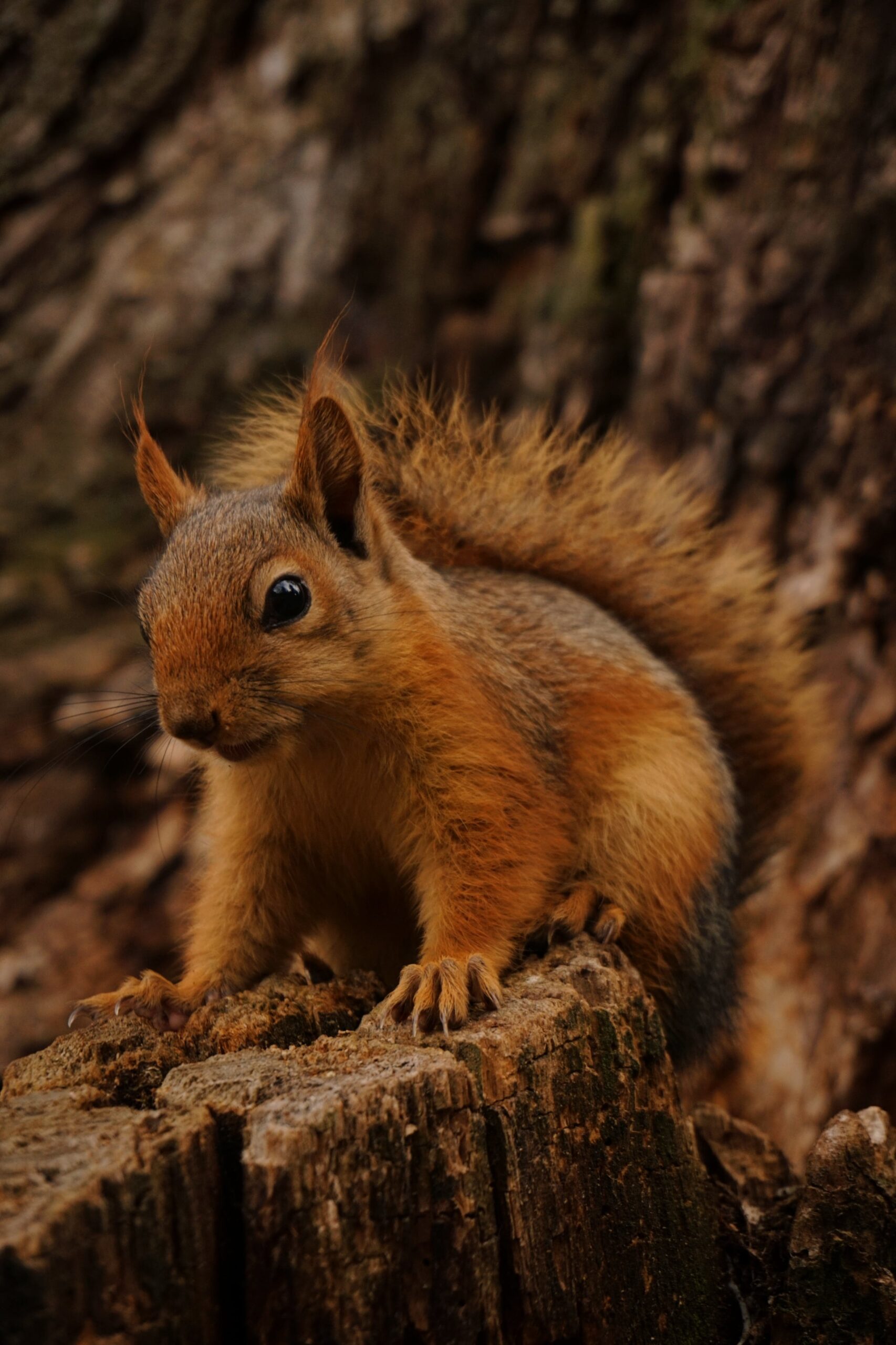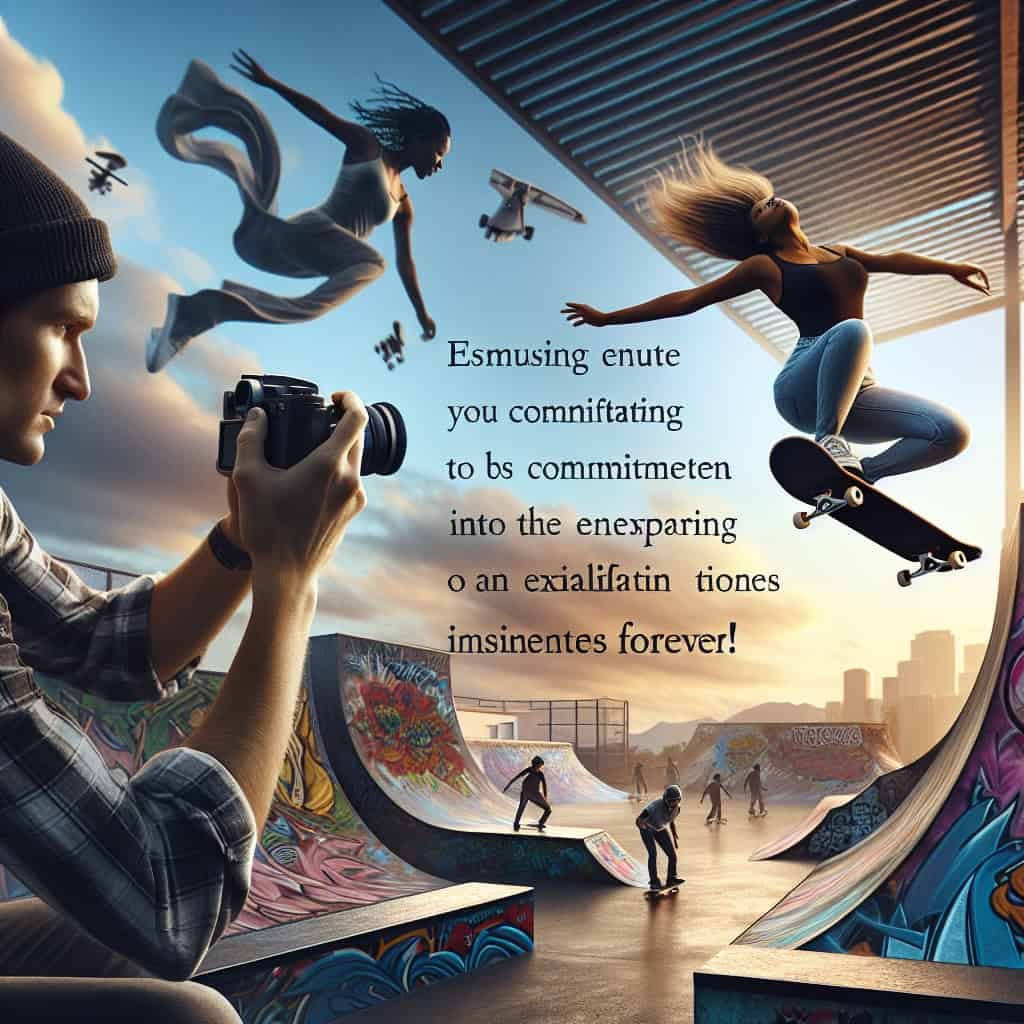Have you ever been captivated by the incredible videos and photographs capturing the thrilling world of skateboarding? If you have ever wondered what it takes to become a skilled skateboard filmer or photographer, then look no further. This article will explore the essential elements that can help you master the art of capturing skateboarding moments with precision and creativity. From technical skills to artistic perspective, get ready to dive into the world of skateboard filming and photography.
Choosing the Right Equipment
Camera
When it comes to skateboard filming or photography, choosing the right camera is essential. Look for a camera that offers good frame rates and resolution, as these elements play a crucial role in capturing the fast-paced and dynamic nature of skateboarding. Consider cameras with high-speed capabilities and good low-light performance to ensure that you can capture the action even in challenging lighting conditions. It’s also important to choose a camera that is durable and can withstand the rough and fast-paced environment of skateboarding.
Lenses
Selecting the right lenses can significantly enhance the quality of your skateboard footage or photos. Wide-angle lenses are ideal for capturing the vast expanses of skate parks or the urban landscapes where skaters often perform their tricks. These lenses allow you to get up close to the action and capture every detail. On the other hand, telephoto lenses are useful for capturing tight shots, emphasizing specific skateboarding maneuvers, or documenting the skater’s emotions. Consider investing in a variety of lenses to have a versatile and comprehensive toolkit.
Tripod
One of the essential accessories for skateboard filming or photography is a tripod. A stable and sturdy tripod is vital for capturing smooth and steady shots, especially when shooting stationary shots or time-lapses. Look for a tripod that is lightweight and easy to transport, without compromising on stability. Additionally, consider tripods that have adjustable legs and can be positioned at various angles to provide flexibility when shooting footage from different perspectives.
Stabilizers
Using stabilizers can significantly improve the quality of your skateboard footage. Stabilizers such as gimbals or shoulder mounts help reduce camera shake, ensuring smoother and more professional-looking shots. These tools allow you to capture the fluid movements of the skateboarder without compromising on image stability. Look for stabilizers that are compatible with your camera and easy to balance, ensuring optimal results while filming or photographing skateboarding sessions.
Memory Cards
Having the right memory cards is essential for skateboard filming or photography. Opt for high-capacity memory cards with fast write speeds to ensure that you can quickly capture and store high-quality footage without interruption. Consider investing in multiple memory cards to avoid running out of storage space while shooting. It is also recommended to format your memory cards regularly to maintain their performance and reliability.
Mastering Basic Photography Skills
Understanding Exposure
Understanding exposure is key to capturing well-exposed shots in skateboarding photography. Learn the basics of aperture, shutter speed, and ISO to control the amount of light entering the camera and to achieve the desired image exposure. Experiment with different exposure levels to capture the fast and dynamic movements of skateboarders, ensuring that their movements are frozen or blurred intentionally, depending on your creative vision.
Composition Techniques
Composition plays a vital role in creating captivating skateboard photographs. Experiment with different angles, perspectives, and framing techniques to capture the essence of skateboarding. Take advantage of leading lines, diagonals, and the rule of thirds to create visually appealing and dynamic compositions. Pay attention to the skater’s body language and the environment to tell a compelling story and draw the viewer’s attention to the subject.
Focus and Sharpness
Skateboarding photography often requires fast and precise focusing to capture the action accurately. Familiarize yourself with different focus modes and techniques, such as single-point autofocus or continuous autofocus, to ensure that your subject remains sharp throughout the shot. Pay attention to the skater’s eyes and face, as they are essential elements of a well-focused image.

Shutter Speed and Aperture
Adjusting the shutter speed and aperture settings can help capture the motion and depth of field in skateboard photography. Experiment with different shutter speeds to freeze the action or create motion blur that adds a sense of movement to your images. Additionally, using a wide aperture can create a shallow depth of field, isolating the skater from the background and drawing attention to their tricks and movements.
White Balance
White balance is crucial for achieving accurate and pleasing colors in your skateboard photographs. Different lighting conditions can affect the color temperature of your images, resulting in a warm or cool cast. Learn how to manually set the white balance or use the appropriate preset modes to ensure accurate color reproduction. Experiment with different white balance settings to create different moods and enhance the overall aesthetics of your skateboard photography.
Learning Skateboarding Culture and Tricks
Familiarize with Skateboarding Tricks
To capture skateboard footage effectively, it’s important to have a solid understanding of the different skateboard tricks. Familiarize yourself with the terminology and mechanics of tricks such as ollies, kickflips, grinds, and aerial maneuvers. This knowledge will enable you to anticipate and capture the precise moments when skaters execute these tricks, resulting in compelling footage.
Study Skateboarding Style and Aesthetics
Skateboarding is not just about tricks; it’s also about style and aesthetics. Study the different styles of skateboarding and the distinctive features that make each skater unique. Pay attention to their body movements, foot placement, and overall demeanor. This understanding will help you capture the individuality and identity of skateboarders in your footage, resulting in visually engaging content.
Understand Skateboarding Culture and Community
To truly capture the essence of skateboarding, it’s essential to understand the culture and community that surrounds it. Immerse yourself in skateboarding culture by attending skateboarding events, watching skateboarding videos, and engaging with the skateboarding community. This will provide valuable insights into the values, attitudes, and lifestyle of skateboarders, allowing you to tell authentic stories through your filming or photography.
Recognize Popular Skateboarding Spots
Skateboarders are always on the lookout for unique and challenging spots to practice their art. Familiarize yourself with popular skateboarding spots in your area or the locations you plan to film. Some spots may offer architectural features that provide interesting angles and perspectives for capturing dynamic shots. Being aware of these spots will help you plan your shoots and create visually captivating footage.
Developing Filming Techniques
Camera Movements and Angles
Experimenting with different camera movements and angles can add a layer of dynamism to your skateboard footage. Try capturing the action from various perspectives, such as low-angle shots or bird’s-eye views. Incorporate camera movements like tracking shots or pans to follow the skateboarder’s movements and create a sense of motion. These techniques will add depth and visual interest to your footage.
Panning and Tracking Shots
Panning and tracking shots are essential techniques for capturing the speed and fluidity of skateboarding. Practice smooth and controlled camera movements while following the skateboarder. Panning involves moving the camera horizontally to track the skater’s movement, while tracking shots require moving the camera alongside the skateboarder. These techniques can create captivating footage that immerses the viewer in the skateboarding experience.

Utilizing Slow Motion
Slow-motion footage allows you to highlight the intricate details of skateboard tricks and movements. Experiment with different frame rates to find the optimal slow-motion effect that accentuates the skater’s style and skill. By slowing down the action, viewers can appreciate the technical aspects of skateboarding that may be missed at regular speed.
Capturing the Essence of Tricks
Skateboarding is all about showcasing impressive tricks, and capturing these moments requires careful attention to timing and anticipation. Practice capturing the apex of tricks, where the skater is most exposed and their body language is most pronounced. These key moments will capture the intensity and skill involved in executing each trick, resulting in visually impactful footage.
Maintaining Steady Shots
To ensure professional-looking footage, it’s important to maintain steady shots throughout your filming sessions. Use stabilizers, tripods or other equipment to reduce camera shake and capture smooth footage. Practice keeping a steady hand while filming to avoid unintentional movements that can distract from the action. Additionally, proper body positioning and using both hands to hold the camera can help ensure stability and focus.
Building a Portfolio
Documenting Practice Sessions and Local Events
To build a portfolio as a skateboard filmer or photographer, start by documenting practice sessions and local skateboarding events. These opportunities will allow you to capture skaters in their element and showcase the unique aspects of your local skateboard community. Documenting these moments can help you establish a style and narrative that sets you apart from others in the field.
Collaborating with Skateboarders
Collaborating with skateboarders is a valuable way to capture their skills and personalities effectively. Build relationships with skateboarders in your community and work together to create compelling content. By collaborating with skateboarders, you can gain insight into their preferences, creative ideas, and preferred shooting techniques. This collaboration will result in content that truly reflects the skater’s style and vision.
Creating a Unique Style
Developing a unique style is essential for standing out in a competitive field. Experiment with different filming or photography techniques, editing styles, and storytelling approaches to develop a distinctive visual aesthetic. Consistency in your style will help potential clients and viewers recognize your work and give you an edge in the industry.
Investing in High-Quality Editing Software
Post-production plays a significant role in creating impactful skateboard footage or photographs. Invest in high-quality editing software that offers a wide range of tools and features to enhance your work. Learn the ins and outs of the software, including color correction, video stabilization, and audio editing capabilities. Developing proficiency in editing software will allow you to fine-tune your footage and create visually stunning final products.
Promoting and Showcasing Your Work
Once you have a portfolio of skateboard footage or photographs, it’s crucial to promote and showcase your work. Create an online presence through a website or social media platforms dedicated to your skateboarding content. Engage with the skateboarding community, share your work, and actively seek feedback and collaborations. Participating in relevant competitions and submitting your work to skateboarding publications or online platforms can also help gain exposure and recognition in the industry.
Networking and Building Connections

Attending Skateboarding Events and Competitions
Attending skateboarding events and competitions is an excellent way to immerse yourself in the skateboarding community. As a filmer or photographer, these events offer opportunities to network with skaters, other professionals in the industry, and potential clients. By participating in these events, you can build connections and develop a reputation within the skateboarding community.
Engaging with the Skateboarding Community
Engaging with the skateboarding community goes beyond attending events. Actively participate in online forums, social media groups, and discussions to connect with other skateboarding enthusiasts, professionals, and potential collaborators. Engaging with the community allows you to learn from others, share your work, and stay up to date with the latest trends and developments in the industry.
Collaborating with Skater-Owned Brands
Collaborating with skater-owned brands can provide unique opportunities to showcase your work and gain exposure. Many independent skateboard brands are always looking for talented filmmakers or photographers to promote their products or capture their team’s skateboarding sessions. Building relationships with these brands can lead to exciting projects and potential long-term partnerships.
Working with Skating Publications and Websites
Pitching your work to skateboarding publications and websites can help increase your visibility and credibility as a filmmaker or photographer. Research publications and websites that focus on skateboarding and submit your portfolio or specific projects for consideration. Being featured in these platforms can open doors to new opportunities and attract attention from potential clients or collaborators.
Connecting with Professional Skateboarders and Teams
Building connections with professional skateboarders and teams can elevate your status within the skateboarding filmmaking or photography industry. Networking with athletes and teams can lead to working on high-profile projects, creating content for skateboarding sponsorships, or collaborating on promotional campaigns. Approach professionals respectfully and showcase your unique skills and style to impress them and gain their trust.
Understanding Lighting and Location
Utilizing Natural Light
Lighting plays a crucial role in skateboard filming or photography. Utilize natural light to capture the skater’s tricks and movements authentically. Pay attention to the direction, intensity, and color temperature of natural light at different times of the day. Golden hour, the period shortly after sunrise or before sunset, offers soft and warm lighting conditions that can enhance the overall aesthetics of your footage or photos.
Mastering Artificial Lighting
In situations where natural light is insufficient or inconsistent, mastering artificial lighting techniques is essential. Experiment with different artificial lighting setups, such as continuous lighting or external flashes, to create a well-lit environment for filming or photographing skateboarding. Understanding how to balance ambient light with artificial light sources can help you overcome challenging lighting conditions and ensure optimal visual results.
Experimenting with Different Environments
Skateboarding takes place in various environments, including skate parks, streets, and urban landscapes. Explore different shooting locations to enhance the diversity of your portfolio and challenge your skills. Each environment presents unique opportunities and challenges that can elevate your filming or photography. Experiment with different angles, compositions, and lighting techniques to capture the skater’s interaction with their environment creatively.

Identifying Optimal Shooting Conditions
To capture high-quality skateboard footage, it’s important to identify optimal shooting conditions. Consider factors such as weather, lighting, and crowd levels to plan your shoots accordingly. Overcast weather or shaded areas can provide even lighting conditions for consistent footage or photos, while sunny days can create dramatic contrasts and vibrant colors. Plan your shoots to take advantage of the best shooting conditions for the desired aesthetic.
Working with Challenging Lighting Situations
Skateboarding often takes place in challenging lighting situations, such as poorly lit skate parks or dimly lit streets at night. Familiarize yourself with techniques like high ISO settings, slow shutter speeds, or using artificial lighting sources to overcome these challenges. Practice capturing skateboarding action in various lighting conditions to develop your skills and adapt quickly to any situation.
Post-Processing and Editing
Organizing and Backing Up Footage
After capturing extensive footage, it’s crucial to organize and back up your files. Create a systematic filing system on your computer or external hard drive to keep track of your footage or photographs. Backing up your files regularly on multiple devices or cloud storage ensures that your work is protected and easily accessible, even in case of unexpected events or technical failures.
Learning Editing Software and Techniques
Learning the ins and outs of editing software is essential for post-processing your skateboard footage or photographs. Invest time in mastering editing programs such as Adobe Premiere Pro or Final Cut Pro. Familiarize yourself with editing techniques like trimming, color correction, and transitions to enhance the overall visual impact of your work. Continuously learn new editing techniques to keep up with industry trends and enhance your skills.
Color Correction and Grading
Color correction and grading play a vital role in creating a cohesive and visually appealing final product. Adjust the colors, contrast, and tonal range of your footage or photos to achieve the desired look and mood. Experiment with different color grading styles to establish a consistent aesthetic that resonates with your personal style or the skateboarder’s vision.
Adding Music and Sound Effects
Music and sound effects are powerful elements that can add depth and emotional impact to your skateboard footage. Select appropriate tracks or sound effects that complement the pace and style of the skateboarding action. Ensure that the audio enhances the overall viewing experience without overpowering the visuals. Properly syncing the visuals with the audio will result in a captivating and immersive final product.
Creating Engaging and Dynamic Skateboarding Montages
Montages are a popular format for showcasing skateboard footage. Create engaging and dynamic montages that combine different shots, angles, and moments into a cohesive narrative. Experiment with varying rhythms, pacing, and transitions to create a visually captivating and energetic flow. When editing montages, pay attention to the overall structure and flow to keep viewers engaged and entertained throughout the entire piece.
Being Aware of Safety Measures
Protecting Yourself and Others
Safety should always be a top priority when filming or photographing skateboarding. Ensure that you and the skateboarders are wearing appropriate safety gear, such as helmets, knee pads, and wrist guards, to minimize the risk of injuries. Communicate with the skaters to establish boundaries and guidelines that ensure everyone’s safety during the filming or photography process.
Understanding Skateboarding Risks
Skateboarding involves inherent risks, and it’s crucial to familiarize yourself with these risks to anticipate potential hazards or accidents. Being aware of common skateboarding injuries and how they can occur will help you position yourself safely while capturing the action. Stay alert and prepared to react quickly to any unforeseen situations.
Creating a Safe Filming Environment
Creating a safe filming environment is essential for skateboarders to perform their best while minimizing the risk of injuries. Remove any potential obstacles or hazards from the filming area to provide a clear and safe space for the skater. Communicate with the skater to understand their preferences and ensure that their needs are met in terms of safety and comfort during the shoot.
Respecting Skater’s Boundaries
Every skateboarder has their own comfort level and limitations. Respect their boundaries and ensure that they feel comfortable performing in front of the camera. Avoid pressuring skaters into attempting tricks or maneuvers they are not ready for, as it can lead to injuries and hinder their performance. Building trust and mutual respect with the skater will result in more authentic and impactful footage or photographs.
Complying with Local Laws and Regulations
When filming or photographing skateboarders in public spaces, it’s crucial to comply with local laws and regulations. Research and understand any restrictions or permits required for filming or photography in specific locations. Respect the rules of the skate parks or other public areas to maintain a positive relationship with the local community and authorities.
Continuously Learning and Improving
Staying Updated with Current Skateboarding Trends
Skateboarding trends and styles are constantly evolving. Stay up to date with the latest tricks, techniques, and equipment preferred by skateboarders. Follow skateboarding media, watch videos, and engage with the skateboarding community online to stay in touch with current trends. By incorporating the latest trends into your work, you can stay relevant and appeal to a wider audience.
Following Influential Filmmakers and Photographers
Learning from influential filmmakers and photographers in the skateboarding industry is a valuable way to improve your skills and expand your creative vision. Follow their work, study their techniques, and analyze their visual styles. By understanding their approach to capturing skateboard culture, you can gain inspiration and refine your own unique style.
Joining Online Communities and Forums
Online communities and forums dedicated to skateboarding filmmaking and photography provide valuable opportunities to learn from peers and professionals. Engage in discussions, ask questions, and share your work for feedback and constructive critique. These communities are an excellent source of knowledge, guidance, and inspiration to help you continuously improve your skills and expand your network.
Attending Workshops and Courses
Attending workshops and courses specifically designed for skateboard filmmakers or photographers can provide invaluable insights and hands-on learning experiences. Look for workshops conducted by experienced professionals in the field or industry-leading organizations. Participating in these educational opportunities allows you to learn new techniques, gain practical knowledge, and network with other passionate individuals.
Pushing Creative Boundaries
To truly excel as a skateboard filmer or photographer, it’s important to continually push your creative boundaries. Seek opportunities to experiment with new filming techniques, editing styles, or storytelling approaches. Embrace unconventional perspectives, take risks, and challenge yourself to create unique and visually captivating content. By constantly innovating and pushing your creative limits, you can differentiate yourself and leave a lasting impact in the skateboarding filmmaking or photography industry.
In conclusion, becoming a proficient skateboard filmer or photographer requires a combination of technical expertise, understanding of skateboarding culture, constant learning, and a passion for capturing the dynamic and exciting world of skateboarding. By choosing the right equipment, mastering photography skills, familiarizing yourself with skateboard culture and tricks, developing filming techniques, building a portfolio, networking, understanding lighting and location, post-processing and editing, being aware of safety measures, and continuously learning and improving, you can carve a successful path in the skateboard filmmaking or photography industry. Embrace the spirit of skateboarding, stay dedicated, and let your creativity thrive to capture the captivating moments in skateboarding that inspire and leave a lasting impression.

